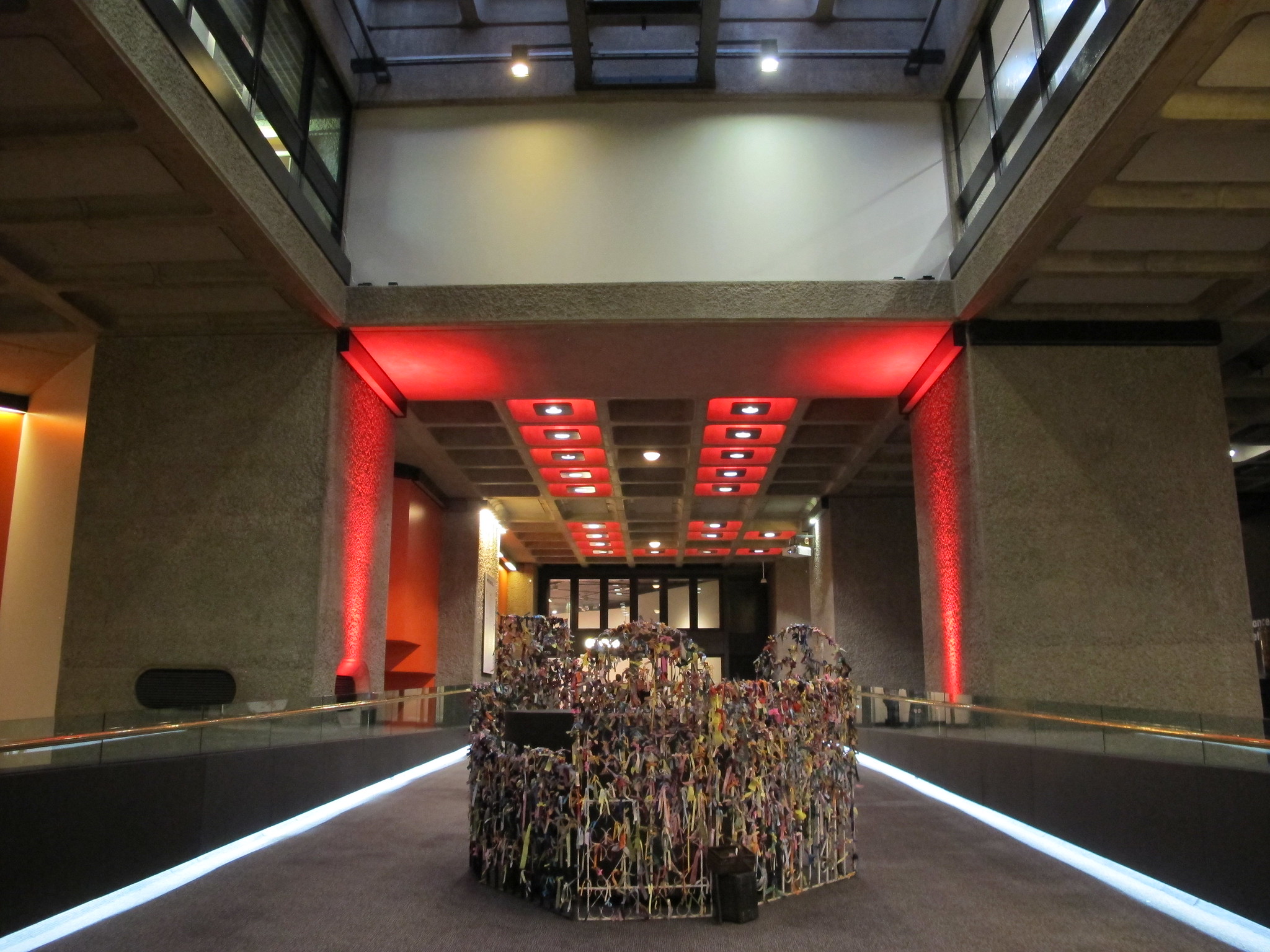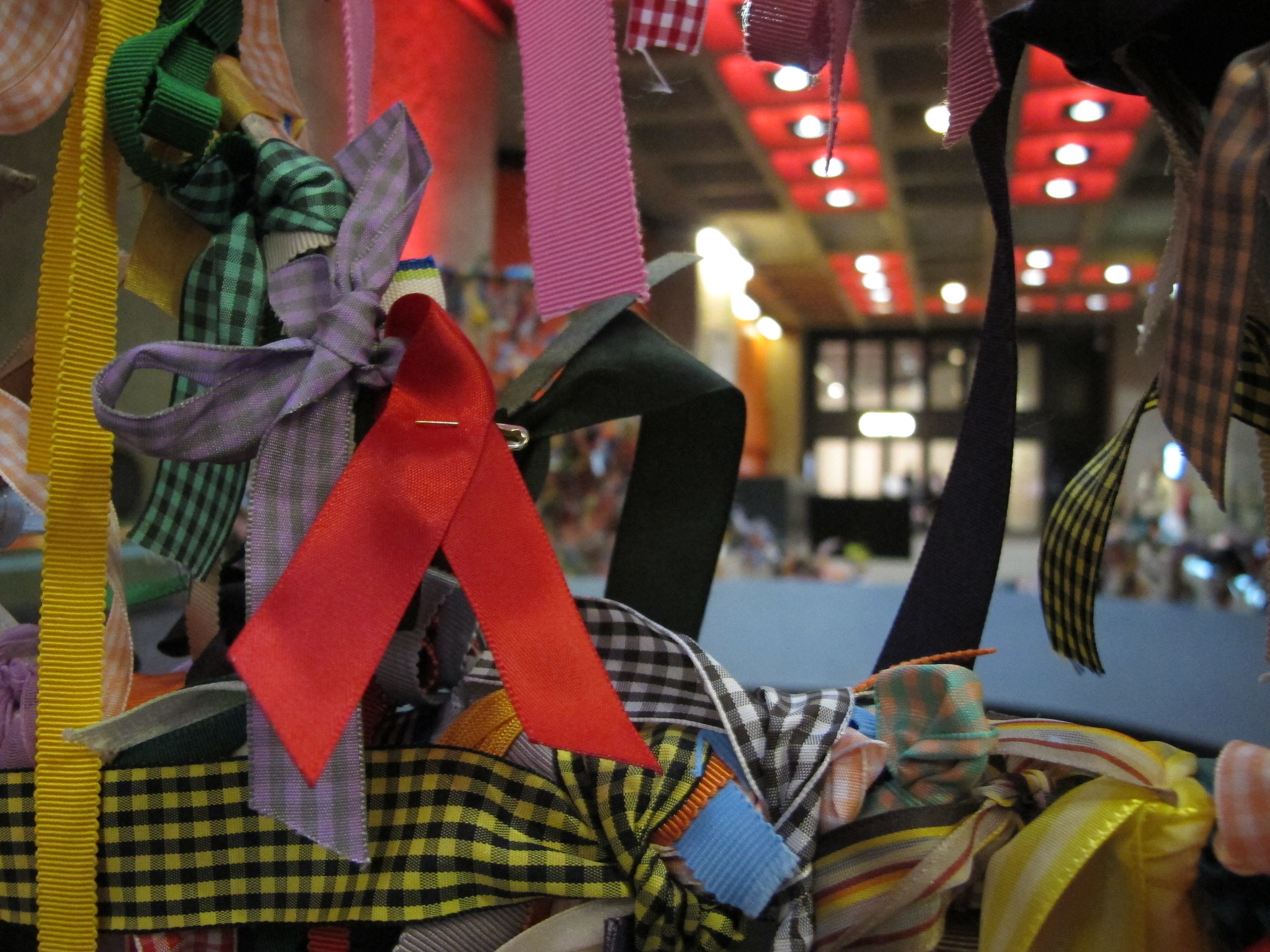Still here. Get used to it.
I'm in London. Not in Tanzania, as I was for World AIDS Day 2014. The situation regarding HIV is a little different. Better, in some ways. Better largely than the year 2000, a comparison to which has been the focus for UNAIDS and many others in the global health and development fields because this year the eight Millennium Development Goals (MDGs) expired, having been set 15 years ago, and the seventeen Sustainable Development Goals (SDGs) were agreed in their place, setting targets for all governments to reach by 2030.
Perhaps amazingly, globally we achieved MDG 6, to halt and reverse the spread of HIV. This is a good thing. But today's figures remain hugely problematic. And behind the figures are millions of people, the millions of personal stories of loss and suffering, of bravery and determination, of action and life lived well with the virus but also of death and mourning those lost to AIDS. The situation is not as it was in 1991 when the artist Karen Finley first created the artwork, photographed above, to provide public recognition of the impact of AIDS, then highly stigmatised and rarely commemorated in public settings, due to homophobia and fear. Today there is still stigma, still discrimination, still misunderstandings and misinformation about HIV. There is still silent and unrecognised suffering. It is not as bad as it once was and we can take heart from that. But we can end this suffering and stop this discrimination, entirely. The global goal is to end AIDS by 2030. That is achievable. We can do it sooner. We should.
Despite the encouraging gains, the global epidemic remains significant. There are 36.9 million people currently living with HIV. This is partially because so many people are now able to live long and healthy lives with anti-retroviral drug treatment, which is a great achievement. There are 15.8 million people accessing treatment, far more than could have been imagined in 2000. Then, getting 3 million people on treatment by 2005 was considered unachievable by many. But only 40% of those who need treatment currently are getting it. Everyone who needs it should have access to those life-saving drugs. As a global community, we can provide this. It is that simple.
What I found surprising about the current figures is that 17.1 million - almost half - of those living with HIV do not know they are infected with the virus. This means they are not accessing treatment, are not aware of the risks to their health or how to act to mitigate them, and, of course, they can unknowingly infect others. There were 2 million new HIV infections last year. That is perhaps the most worrying figure of all. It tells us that HIV is very much a present problem. And one that will continue: decades from now, those who acquired HIV in 2014 will still need treatment. We are far from ending this epidemic. But we can do it.
In the 1990s, Finley's artwork provided a much needed space for mourning. But sadly, we still need a space to mourn. There were 1.2 millions deaths due to AIDS in 2014. One of them was an AIDS activist I knew in Tanzania named Dora Elia. She was open about her HIV positive status and worked to address HIV and AIDS in that very poor part of Africa for more than the last 10 years since I first met her. She was very informed about HIV and heavily involved in educating others. She had support and friends around her. She had access to treatment, ostensibly free for everyone in the Tanzanian health system. She passed away just the month before I returned to Tanzania in September 2014. Others told me that she died partially because she did not have the money to pay for the quality of care she needed, given the difficulties of the deeply under-resourced national health system, and that she even struggled to get the food to keep herself healthy. These are the same problems faced by millions of others around the world, even in this world of astonishing plenty. Her death, like the 1.2 million others, could have been prevented. Should have been. We can stop this suffering, these deaths. Everyone on earth actually can have a decent, long and healthy life, together, if we are willing to work for it. Let us make it a reality, for all of us, now.
http://www.unaids.org/en/resources/campaigns/WAD2015


0 Comments:
Post a Comment
<< Home